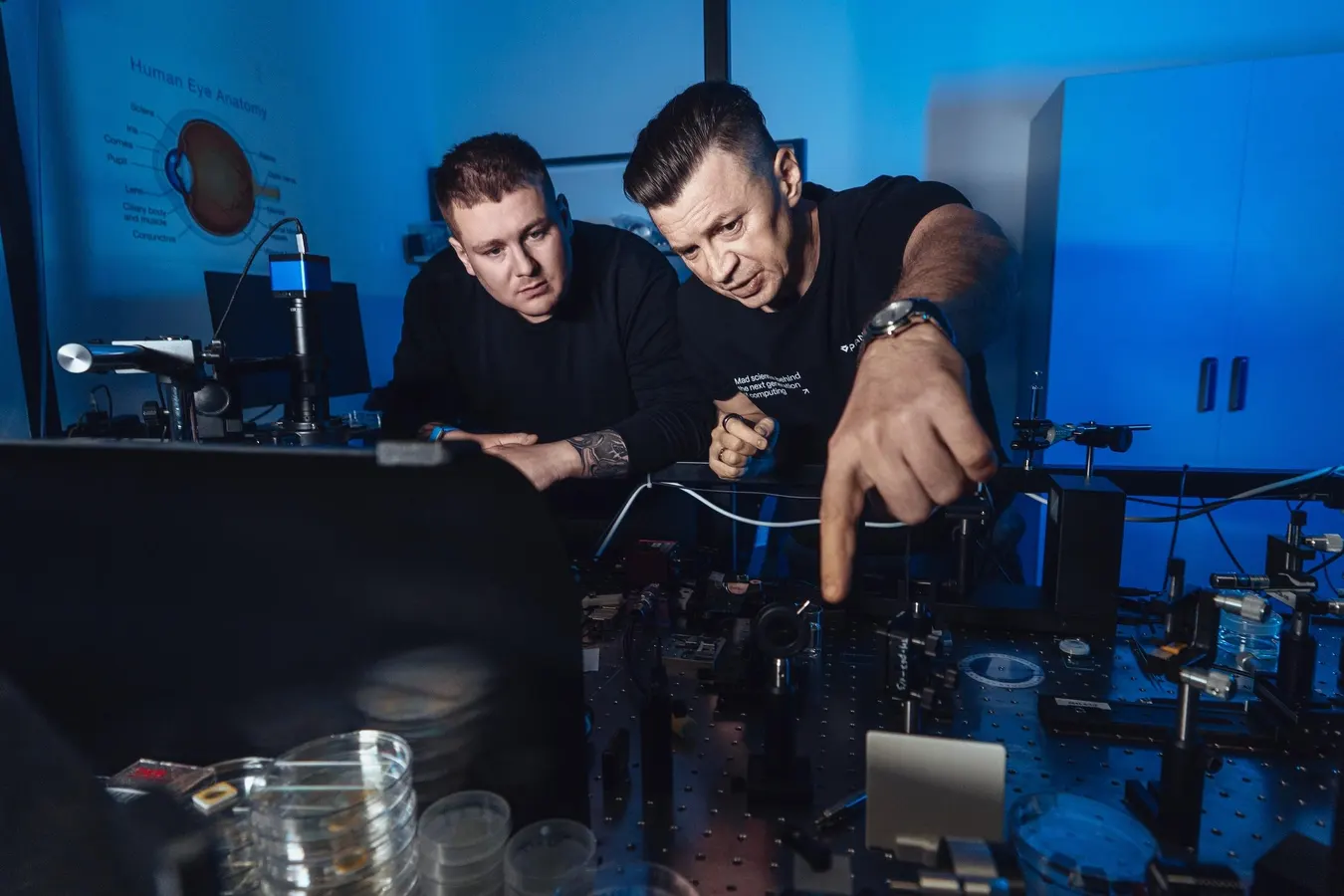Copyright Forbes

Apple, Meta, Google and Samsung, among many others, are building AR glasses on the premise that these will succeed smartphones and act as an interface for the rapidly growing AI ecosystem. In Dubai, Xpanceo, founded in 2021 by entrepreneur Roman Axelrod and physicist Valentyn Volkov, is developing smart contact lens built from atom-thin materials that merges vision, health monitoring, biosensing capabilities, and vision-enhancement features to become a natural environment for AI to live and interact with the human body. From the start, the company viewed its lens not as another display but as a universal layer of intelligence embedded into the human experience, a platform where data, sensors, and perception converge. Axelrod describes the concept as a “habitat for intelligence.” He told me that screens, even the most advanced augmented-reality glasses, keep people outside their digital tools. The next interface, he believes, will live inside human perception itself. Volkov, one of the world’s most cited nanophotonics researchers, supplied the materials science to make it plausible. Together they began to design a biological device, an interface built to host AI rather than simply display its output. Their engineering progress has been methodical. Over four years, the team has produced more than twenty-five prototypes, each addressing a specific barrier: display resolution, biosensing, power, flexibility, and safety. The latest prototypes include an interactive microdisplay, biosensors for glucose and intraocular pressure, and a miniature solid-state battery. A small companion device worn on the body handles processing and wireless power transfer. MORE FOR YOU The lens functions as both sensor and interface. Sitting directly on the eye, the display overcomes the key limitations of current AR devices: no brightness issues, no field-of-view constraints, and nearly perfect optical efficiency. “When the distance between the display and eye is zero, all the light reaches the retina,” Volkov said during a recent lab tour. “You can lower power consumption hundreds of times and still get a clear image.” That efficiency opens the way to new use cases. Early applications include medical diagnostics, pilot and astronaut vision systems, and elite sports performance tracking. Each deployment expands the range of data the lens can collect and the tasks its AI can interpret in real time. “We are building the infrastructure for seamless collaboration between human senses and artificial intelligence,” Axelrod told me. The company’s origins underline how unusual that mission is. Axelrod grew up in a family of a computer engineer and later worked in robotics and esports. By his early thirties, he concluded that hardware built around screens had reached its limit. Even before AI applications became mainstream, he wanted a device that could listen, see, and reason with the user, like Iron Man’s Jarvis, but real. Volkov, already collaborating with Nobel laureate Konstantin Novoselov on two-dimensional materials. had the laboratory and team to attempt it. The partnership joined business instinct and academic rigor, a combination that turned skepticism into steady progress. Xpanceo’s lab in Dubai now employs about one hundred scientists and engineers, half of whom hold PhDs. Recognized as one of the world’s top three physics startups according to the Nature Index, the company holds eighteen patent applications covering fifty-seven inventions. In July 2025, it raised $250 million in Series A funding at a $1.35 billion valuation, the largest round in the history of AR/VR and wearables, after turning down at least two acquisition offers from major tech and medical companies The firm plans to commercialize medical and industrial lenses first, where regulation and scale can be managed, before attempting a consumer AR product later in the decade. Its collaboration with Italian med-tech company Intra-Ker already produced an intracorneal implant tested in a donor human eye with a potential to restore vision by projecting images directly onto the retina. The project validated Xpanceo’s optical platform while demonstrating a concrete medical use. According to the company’s roadmap, the first fully integrated smart contact lens prototype is expected by the end of 2026 and will be presented to the public at a major conference in early 2027. Axelrod says today’s experiments are steps toward their deeper goal. “We are constructing the way to interact with an ambient and omnipresent layer of intelligence, seamlessly assisting humans in managing every aspect of their lives, granting previously impossible capabilities, and dramatically enhancing quality of life.” Xpanceo is using their contacts’ sensors gather data from the body, AI models interpret it in the cloud, and the lens delivers the output back through vision. Xpanceo works at the atomic level to merge optics, photonics, and flexible electronics. Xpanceo may succeed where many others have failed, notable Mojo Vision, which pivoted away from contacts years ago, after spending more than $100 million. The challenges are substantial. Manufacturing yield, regulatory approval, and long-term biocompatibility will determine when the technology will reach consumers. Yet even in prototype form, the company’s progress suggests a possible next chapter in computing where AI moves off the desktop, out of the cloud, and into the sensory field of the human eye. Axelrod and Volkov call it the “after-glasses” era. If their team succeeds, the computer will no longer be a device we hold or wear. It will be something we look through, a living interface between biology and the digital world. Dr. Patti Maes of the MIT Media Lab told me in 2o17 that we will inevitably become cyborgs, increasings merged with our devices. Xpanceo’s success will prove her prophecy was correct.



